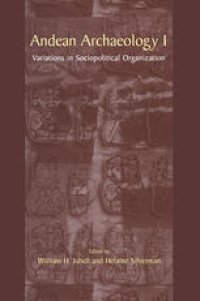
Ebook: Andean Archaeology I: Variations in Sociopolitical Organization
- Tags: Archaeology, Anthropology
- Year: 2002
- Publisher: Springer US
- Edition: 1
- Language: English
- pdf
Study of the origin and development of civilization is of unequaled importance for understanding the cultural processes that create human societies. Is cultural evolution directional and regular across human societies and history, or is it opportunistic and capricious? Do apparent regularities come from the way inves tigators construct and manage knowledge, or are they the result of real constraints on and variations in the actual processes? Can such questions even be answered? We believe so, but not easily. By comparing evolutionary sequences from different world civilizations scholars can judge degrees of similarity and difference and then attempt explanation. Of course, we must be careful to assess the influence that societies of the ancient world had on one another (the issue of pristine versus non-pristine cultural devel opment: see discussion in Fried 1967; Price 1978). The Central Andes were the locus of the only societies to achieve pristine civilization in the southern hemi sphere and only in the Central Andes did non-literate (non-written language) civ ilization develop. It seems clear that Central Andean civilization was independent on any graph of archaic culture change. Scholars have often expressed appreciation of the research opportunities offered by the Central Andes as a testing ground for the study of cultural evolu tion (see, e. g. , Carneiro 1970; Ford and Willey 1949: 5; Kosok 1965: 1-14; Lanning 1967: 2-5).
The origins and development of civilization are vital components to the understanding of the cultural processes that create human societies. Comparing and contrasting the evolutionary sequences from different civilizations is one approach to discovering their unique development. One area for comparison is in the Central Andes where several societies remained in isolation without a written language. As a direct result, the only resource for understanding these societies is in their material artefacts.
In this work, the focus is on what the material remains reveal about the sociopolitical structures of the Central Andes region. This focus on ancient identity politics adopts a perspective that explicitly interrogates the processes and strategies by which higher social groups acted as self-interested agents in the achievement and maintenance of differential status, including:
- symbols of power and their role in the construction of an elite identity;
- social legitimization and achievement of economic or material power;
- design of architecture for the display of power and exercise of social control; and
- promotion of labor-intensive agriculture for the purpose of surplus production and extraction.